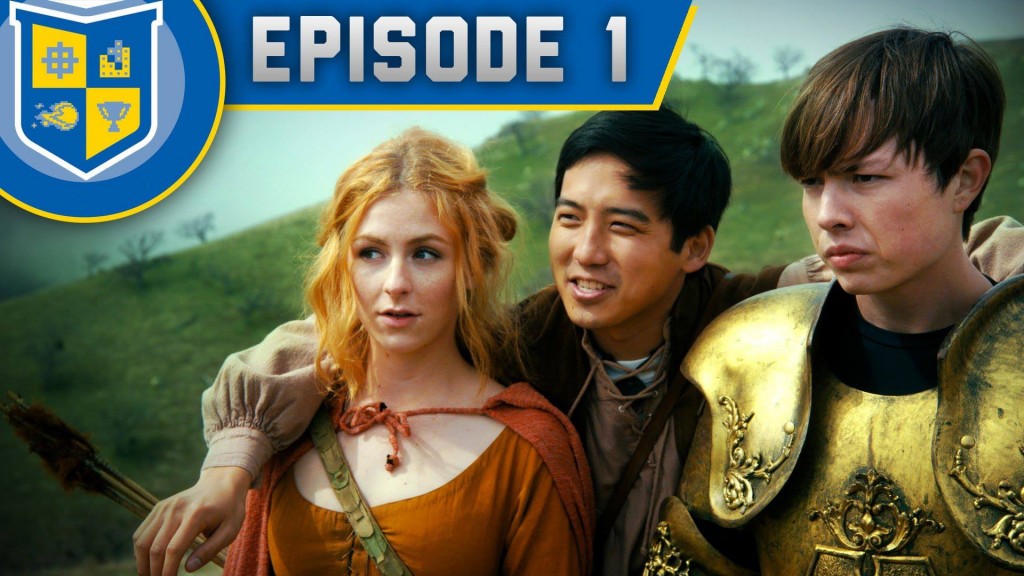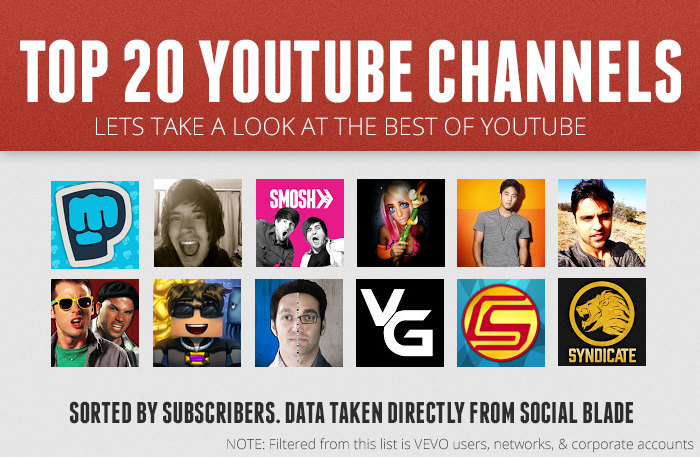“What happens when there’s no independent media left?”
A decade ago, this question was unthinkable. In 2005, “new media” was still new and its rules were largely unwritten. To put this in perspective, in 2005 Steve Jobs announced the iPhone’s new video capability by showcasing Tiki Bar TV, a no-budget podcast that was literally filmed in its co-creator’s Vancouver apartment.
Today, that concept is unthinkable.
That’s because today Tim Cook stands onstage with U2 at Apple events, not with independent media creators. New media channels have been co-opted by “old media,” but the big names online are mostly the same big names from other media.
It’s also because you can now watch YouTube, Netflix, and NBC all on the same box where you send emails and play video games. The screens have conflated, and all media is considered equal in the eyes of the viewer.
Meanwhile, even Hollywood studios have backed away from the “independent” game, favoring tentpole franchises over small-budget films that could be profitable on a smaller scale. Instead of swinging for base hits, they now need constant home runs to satisfy their earnings forecasts.
All of this makes it harder for independent media creators to stay in the game.
But wait… in this world of instant global access, how is this possible?
Wasn’t the democratization of the tools supposed to level the playing field?
Only until the real money showed up.
NEW BOSS, SAME RULES
In 2005, YouTube and Facebook were cultural oddities. Now they’re both publicly traded (YouTube via owner Google), and Pinterest is widely expected to follow suit. As such, they can’t afford not to be profitable — and independent voices aren’t safe bets when you have shareholders to please.
This explains why new rules make it even harder for users of Facebook, Pinterest, etc., to profit by using those channels. Like most ad-supported distribution deals, the creators earn a pittance while the distributors retain most of the revenue. Some disruptors are trying to upend that model, but their profit structures will require a big change in user behavior.
Granted, there are upsides to just taking whatever handout YouTube is willing to give you. As Firas mentioned on Twitter, being able to focus on your media and let YouTube deal with the problem of attracting advertisers on your behalf frees you up from having to be an artist and a mogul at the same time.
And yet, when the top YouTube channels are pulling in less than $30K per month in advertising, you can see the problem: that’s great money for a solopreneur who’s doing a gaming or fashion videoblog, but it’s impossible to produce a broadcast-quality fictional series on that budget. As an example, the creators of Video Game High School had to crowdfund $900K to produce their final five episode season, which breaks down to nearly $200K per episode.
Relying on these channels to drive or supply your revenue also leaves you at the mercy of their ever-changing algorithms, which means the most popular way to be seen on Facebook in one year can suddenly become a dead end a year later.
Ultimately, the new media channels are just using the same business model as the old media channels: advertising props up everything, and the creators make a fraction of the revenue while the middlemen make all the money.
And as all of this is happening, every channel from Netflix to Amazon to… Overstock.com (?) is hellbent on creating their own content, so they can retain the rights to profit from it on any future channels that arise. This same mentality is changing the way TV shows are produced, destroying the independent studio model in favor of each network simultaneously becoming a distributor AND a studio.
But those new content deals aren’t for you. They’re for Woody Allen.
So basically, if you want to make a living creating media online, you need to do one of four things:
* Get hired by an agency to create branded content (AKA “native advertising”)
* Get popular enough on a channel (YouTube, etc.) that the channel (or a middleman agency) decides you’re worth signing to a contract that primarily favors them
* Already be successful in another medium (TV, film, comedy, etc.) which prompts Netflix, Amazon, Yahoo, Hulu, etc., to offer you a development deal because you’re a known quantity that they can advertise around
* Pull a Broad City, in which your web content is so good that it gets noticed by a mainstream player (in this case, Amy Poehler) who helps shepherd it to greater success on a mainstream channel (in this case, Comedy Central).
So, where does this leave independent creators who want to build something that has a chance to live on its own?
I think it comes down to redefining what “independent success” means.
7 Ways to (Still) Make It On Your Own
1. Use mainstream web channels to drive traffic to your own walled garden. Years ago, the creators of Ask a Ninja implored their fellow web video creators to use YouTube sparingly. Instead of locking your audience to their platform, just put a portion of your output there [where you can still earn a percentage from the ad revenue], but encourage your diehard fans to follow through to a website you control, where they can subscribe, donate, buy merchandise, or otherwise support you, the creator, directly.
2. Be a first-mover in emerging channels. Early adopters of Vine and Snapchat who developed massive followings in those channels are the creators that brands turn to in order to learn how to profit from those channels themselves, sometimes through licensing deals. If you can become an expert in how a new channel works (at your own expense), you can eventually profit from the brands who’ll exploit your expertise. Isn’t this selling out? Sure, but: then you can build your own media property with the money they’ve invested in you.
(This is the indie equivalent of Hollywood actors who make a popcorn movie followed by an Oscar contender, over and over, throughout their careers; the for-profit roles allow them to make for-love films. And if you’re shrewd, like the Duplass brothers, you can become profitable at both.)
3. Aim for the ancillaries. Use your digital audience as the hook to bait legacy media, like the book deals signed by top YouTubers. Yes, this is personal branding taken literally — and it may be the route that leads you to the profitability that YouTube itself can’t deliver.
4. Defiantly perfect your specific voice that speaks powerfully to a passionate niche audience. There’s a reason that Broad City is a breakout hit with a specific kind of audience — mostly urban women under 40 — and that’s because its creators are obsessively devoted to telling their story in such a way that it resonates almost primally with its most passionate fans. Ditto the longtime success of webcomics like Diesel Sweeties, or web series like Homestar Runner, whose incredibly particular POVs couldn’t be found anywhere else.
5. Tell an inescapably good story. It’s tried (and trite) but true; a good story solves all your problems. Regardless of the genre, the tone, the quality, etc., if the story itself is compelling, the people who love it will overlook its flaws in their quest to find out what happens next. Why are so many low-budget directors getting called up to film Hollywood franchises? Because they’ve proven they can tell a gripping story regardless of its budget. (This may be the biggest lesson from the rise and fall of “new media”: just because the tools have been democratized, that doesn’t make good storytelling any easier.)
6. Be so honest that it terrifies you. Look, life is hard and we’re all trying to get through it together. Sometimes being bluntly honest about your own experiences resonates with other people in such a way that they see themselves in your work and realize they’re not alone. Hyperbole and a Half author Allie Brosh probably wasn’t expecting to sign a book deal from her cartoon blog, but her candor about battling depression touched a chord in her audience that caused her story to travel. When you bond with an audience like that, it’s more than just business.
7. Labor for love, not profit. If you create independent media because you’re passionate about getting better at creating independent media, you’ll enjoy the experience regardless of the outcome. And if you love what you’re doing, that enthusiasm will become infectious to a portion of your target audience, who’ll then be motivated to share your work with their own friends, which can lead to a slowly-growing organic word-of-mouth success in terms of audience reach and impact. And while that’s far from a guaranteed route to solvency, success stories like Fifty Shades of Grey prove that it can be done.
BUT SHOULDN’T THIS BE EASIER?
Probably not. If it was, we’d have a cats-on-skateboards economy.
So get to it.
Otherwise, the only winners will be the ones who were already ahead.
Dig my blog? Follow me on Twitter.





0 Comments